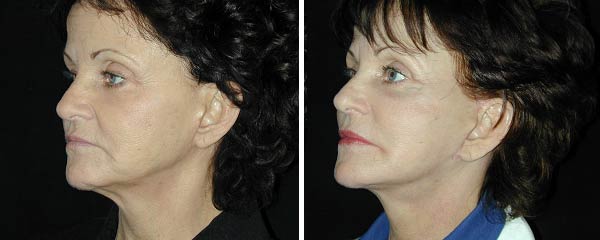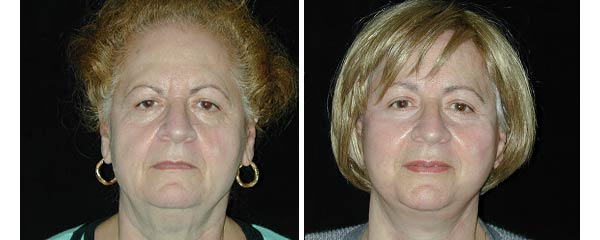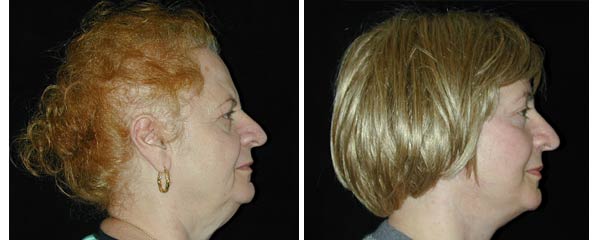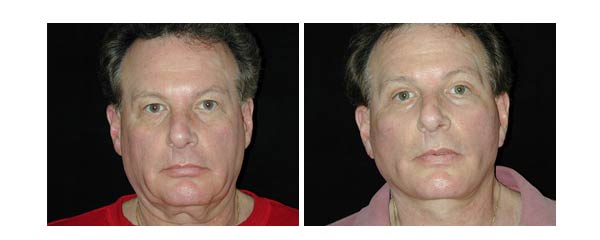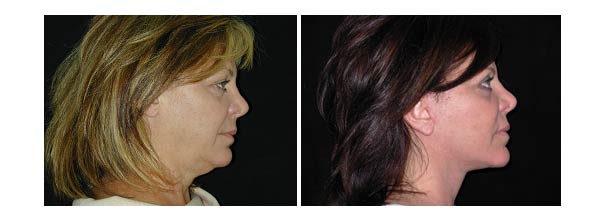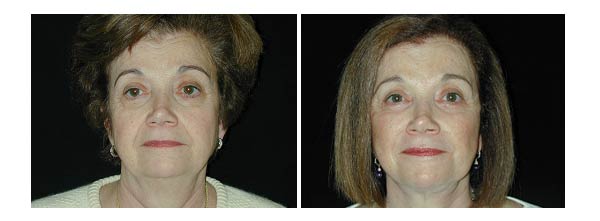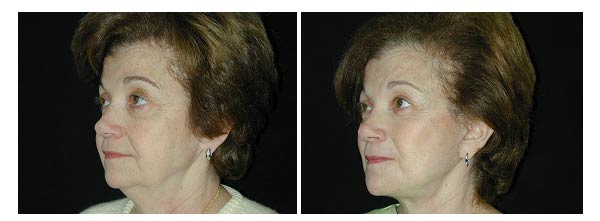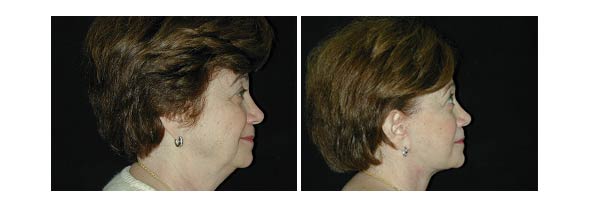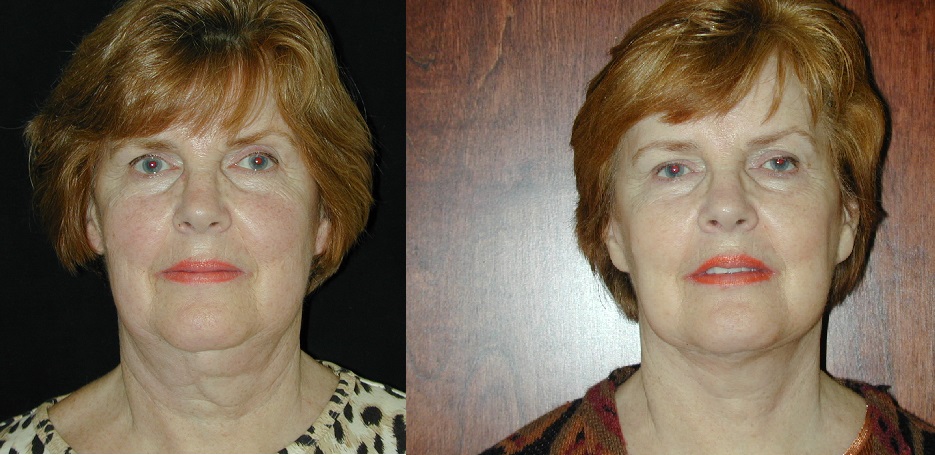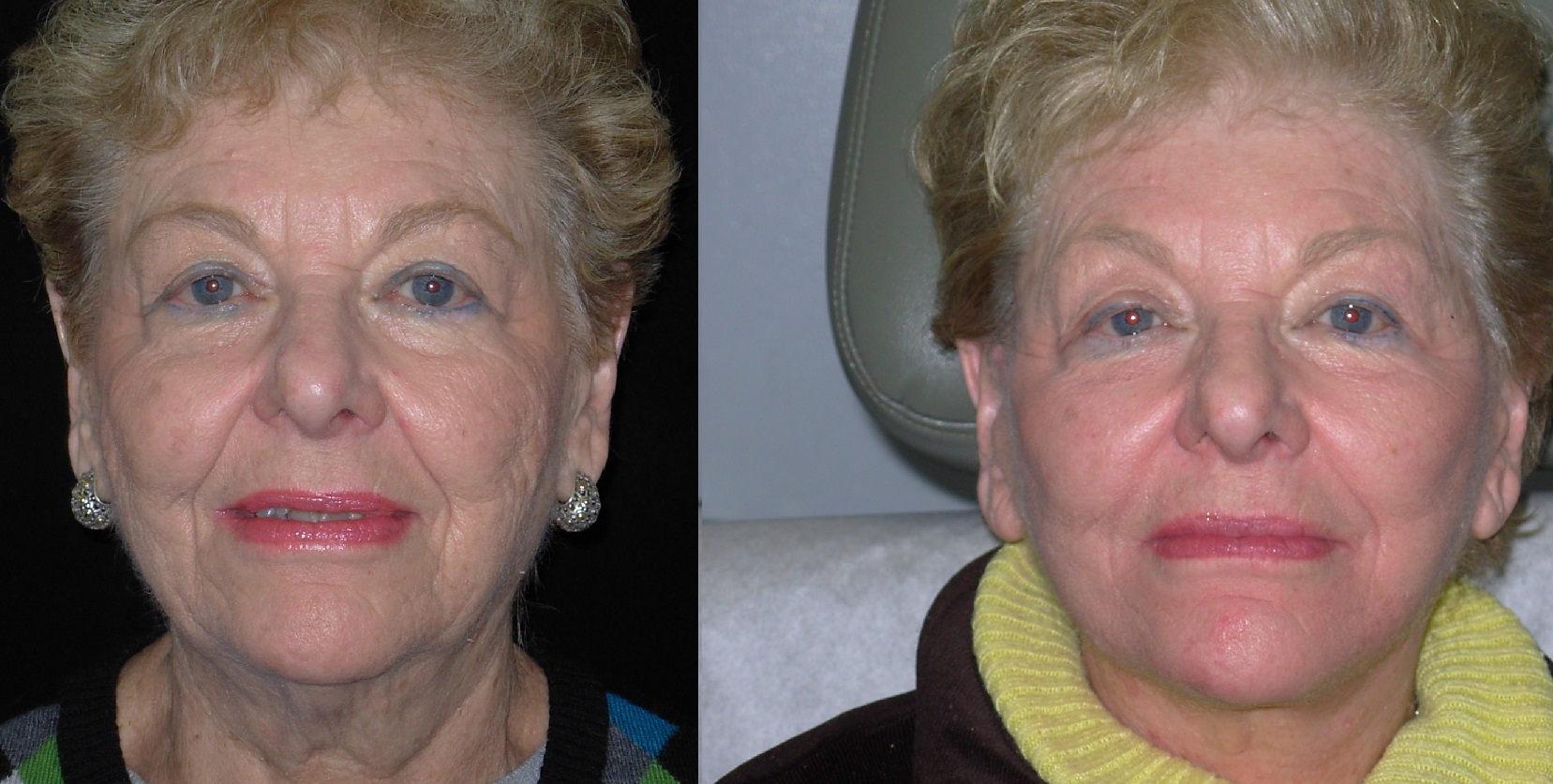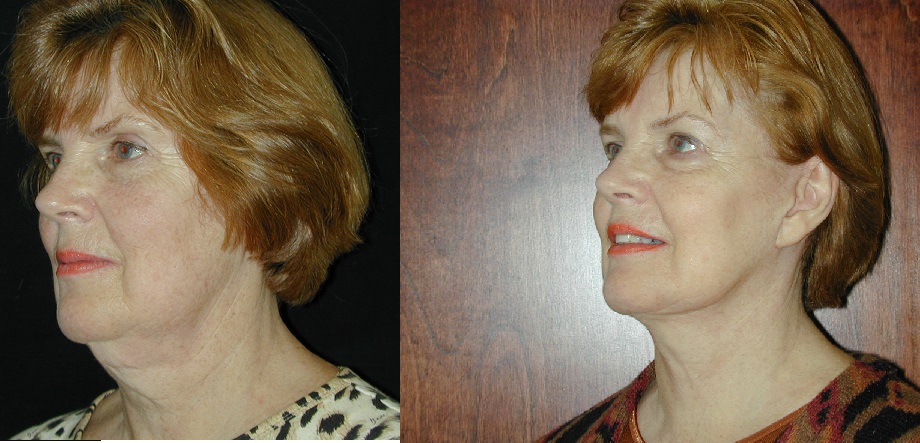What is a Facelift?
A facelift procedure lifts hanging excess skin and deeper structures of the face and neck with repositioning these structures and removing excess yielding a more youthful, refreshed appearance. The procedure improves hanging jowls, obscured jaw line, sagging cheek skin and loose flabby necks. Facelift does not rejuvenate or reposition low eyebrows, which is a separate and distinct procedure.
Consulting with Dr. Mezrow:
During the consultation, Dr. Mezrow will ask you about your particular concerns regarding your face and neck. This will help determine your expectations and determine whether they can be realistically achieved. After obtaining a comprehensive medical and surgical history, Dr. Mezrow will examine your face and neck, assessing the thickness, texture and elasticity of your skin, the severity of skin folds including neck muscle banding, excess fat and skin. In addition, hair density and position of your hairline will be examined for planning of discretely placed incisions.
Who is a candidate?
Because of individual factors, (skin quality, soft tissue, bony structures, aging, etc.), not everyone will achieve the same results from a facelift. Dr. Mezrow will select the surgical technique that he feels that will obtain the best outcome for you.
Check out Before and After photos of our clients
How is the procedure done/Where will I have scars?
Facelift is usually performed with a short hospital stay or short stay in a post surgical recovery center. The procedure typically takes approximately 3-4 hours to perform. Most patients recover within 1 to 2 hours after surgery and either stay in the hospital overnight or are discharged to a post surgery center for typically a one-night stay, if surgery is performed in an ambulatory surgery center. It is important to arrange for someone to drive you home after your stay in the hospital or post surgical recovery center and to stay with you for at least the next day or two.
Although there are many variations to the face and neck lift procedures, generally the incisions are hidden in the sideburns then in the natural contour of your ear, then extends around the earlobe following the crease behind the ear and back into the hairline. Following surgery, incisions can usually be hidden by your hair or with makeup. There may also be a small incision hidden underneath your chin.
Through the incisions, the skin is separated from the underlying tissues to permit access to the deeper structures, which are elevated to a more youthful position. The skin is then repositioned and the excess is removed. If necessary, the neck is further rejuvenated by making a small incision beneath the chin that allows excess fat removal and improving muscle contour that cause cord-like appearance.
What are the potential complications?
You can help minimize certain risks by following the advice and instructions of Dr. Mezrow, both before and after surgery. Fortunately, significant complications from face and neck lift are infrequent, however, all surgery has risks. Dr. Mezrow will discuss with you, the risks, benefits and alternatives and answer all your questions.
Some potential complications include hematoma (an accumulation of blood under the skin that may require removal), infection, nerve injury, poor scarring, altered skin sensation, hairline changes, delayed healing with skin loss and reactions to anesthesia. While plastic surgeons are trained in techniques for safely manipulating facial skin and tissue, injury to underlying structures is possible, though it is usually only temporary. Facelift incisions are most often inconspicuous, but this is not entirely predicable due to individual variations in healing.
A complication, which delays healing and prolongs recovery, is more common in diabetic patients and those who smoke. Preoperative and postoperative instructions will be given to you by Dr. Mezrow in attempt to reduce the likelihood of complications and make you as comfortable as possible with the whole process. Smokers will be instructed to stop smoking 4-6 weeks prior to surgery and not resume smoking to reduce the risk of delayed healing, skin loss, wounds, infections and compromised outcome. Aspirin, anti-inflammatory medications as well as agents that cause bleeding should be discontinued two weeks prior to surgery (or as otherwise instructed by Dr. Mezrow and your primary physician) to reduce the likelihood of bleeding.
What kind of medications will be given to me?
Medications are administered for your comfort during the surgical procedure. Typically, local anesthesia, general or intravenous sedation is administered so you will be comfortable during the procedure. When surgery is completed, you will be taken into a recovery area where you will continue to be closely monitored. You will usually have two small drains and a gauze head dressing around your head.

